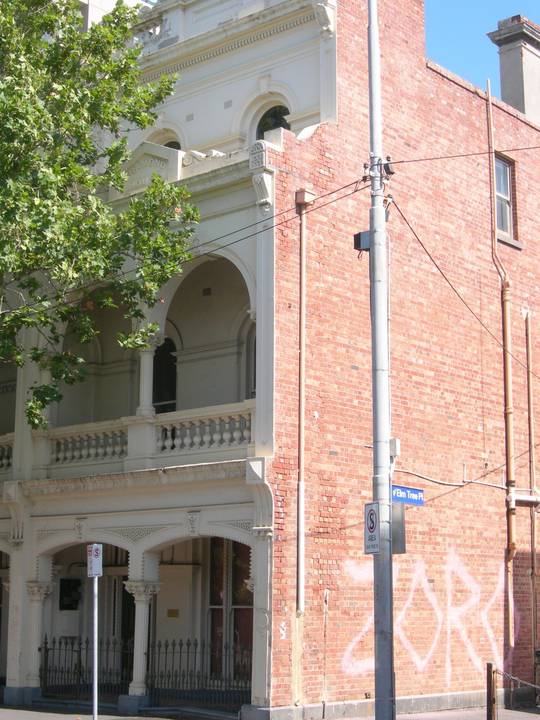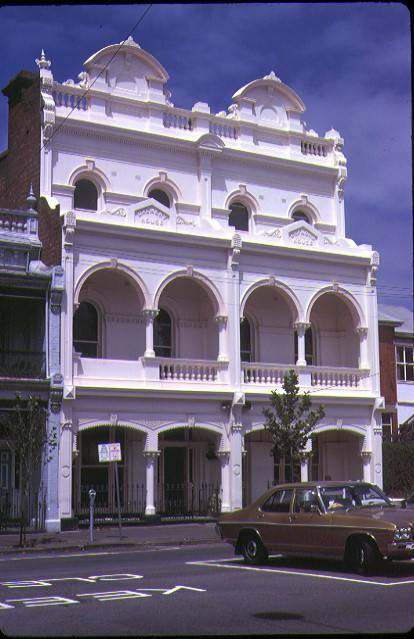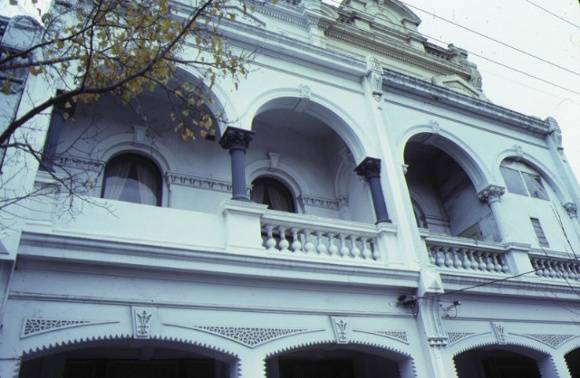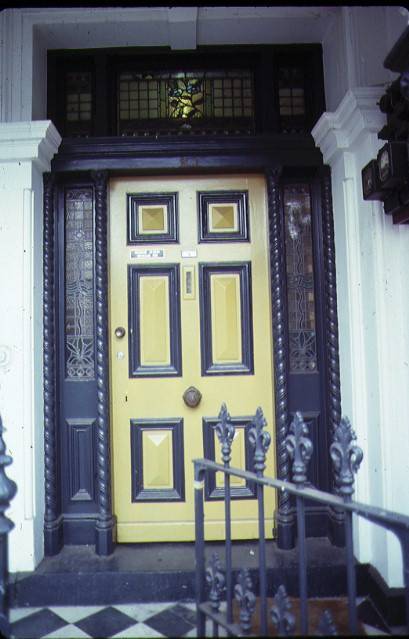| Back to search results » | Back to search page » |
|
CRAMOND HOUSE
Location23 QUEENSBERRY STREET AND 4-12 ELM TREE PLACE CARLTON, MELBOURNE CITY
File Number603151LevelRegistered |
|
Statement of Significance
WHEA AREA OF GREATER SIGNIFICANCE What is significant?
Cramond House was erected in 1888 by the Paterson family. It is one of a pair of houses designed for the Patersons by the architect Thomas Watts and built by A Oliver. The Patersons sold Dalmeny House in 1890 to an artist, John Brunton. Cramond House is in the so-called boom-style classicism, with a characteristic range of classical elements and free detailing. It is a three storey house of brick construction with a rendered facade and a two storey verandah. The ground floor level of the verandah is treated as an arcade composed of stilted segmental arches with nail head mouldings and rustication to the spandrels. A simple iron palisade fence runs along the line of the arcade. The upper storey is a loggia with round arches. The main parapet is very elaborate with a baroque broken pediment flanked by scroll work and balustrades. Other details include an antefix, decorated keystones, masks and urns.
How is it significant?
Cramond House is of architectural and historical significance to the State of Victoria.
Why is it significant?
Cramond House is architecturally significant as a prominent feature of the Queensbury Street precinct and unusual example of its type. Cramond House survives intact with its neighbour Delmaney House as an unusual example of the so-called boom style classicism, notably for the highly mannered treatment of the verandah and unusual decorative elements including nail head mouldings and rusticated spandrels to the arcade.
Cramond House is historically significant for its close association with Melbourne artists and writers. Together with its neighbour Delmaney House, it was the regular meeting place in the late 1880s and the 1890s of a large group of Melbourne artists and writers, including one of its first occupiers John Ford Paterson, a notable painter from 1892-1911. Others in the group included Paterson's brothers Hugh and James, Arthur Streeton, Frederick McCubbin, Max Meldrum and Louis Esson.
Group
Residential buildings (private)
Category
House







